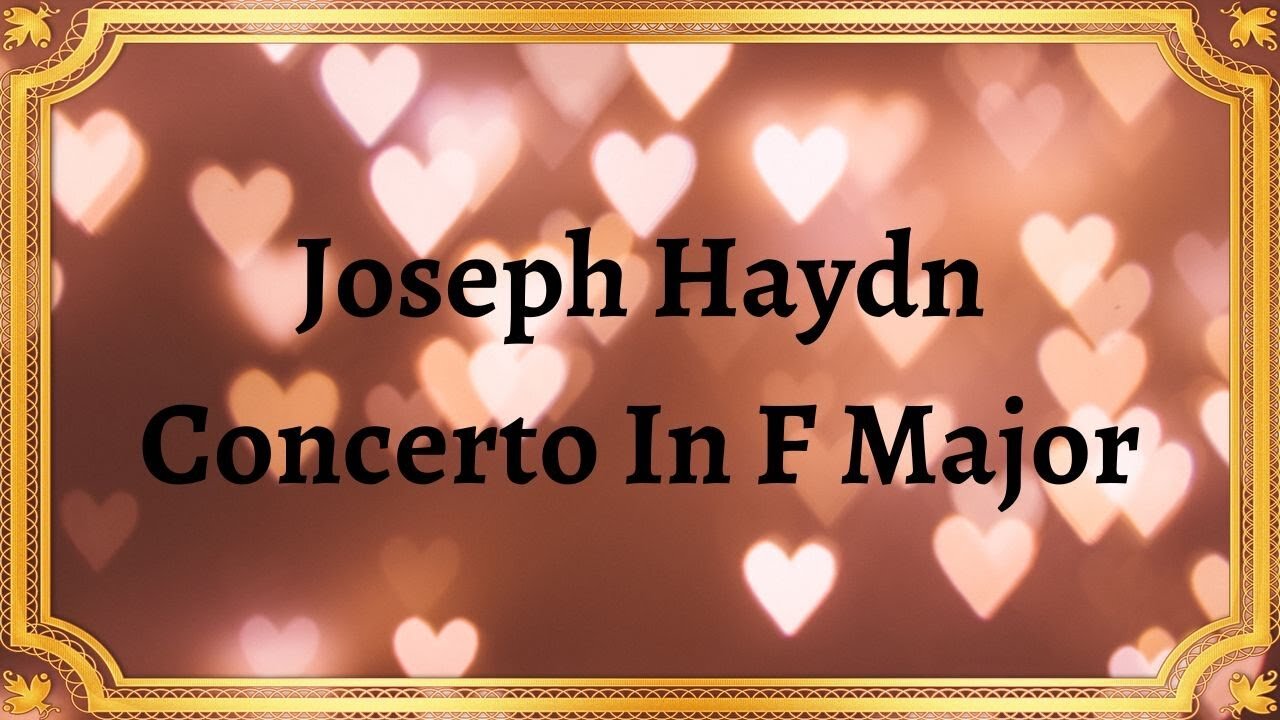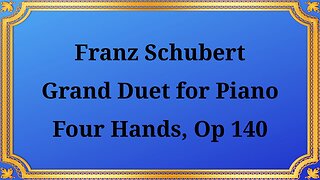Premium Only Content

Joseph Haydn Concerto In F Major
#JosephHaydn #Concerto #FMajor #ClassicalMusic #MusicalComposition
#Haydn #InstrumentalMusic #OrchestralMusic #ClassicalEra #AustrianComposer
Publication date 1951
THE LONDON BAROQUE ENSEMBLE Karl Nags Conductor
Classical music has bestowed upon us a treasure trove of timeless masterpieces, and among them shines brightly the "Joseph Haydn Concerto In F Major."
The "Joseph Haydn Concerto In F Major" was composed by the renowned Austrian composer Joseph Haydn during the late 18th century. Haydn, often referred to as the "Father of the Symphony," was a prolific composer whose contributions to classical music are immeasurable. This concerto represents a pinnacle of his compositional prowess and serves as a testament to his enduring legacy.
The concerto is a genre that showcases the virtuosity of a solo instrument, accompanied by an orchestra. In the case of the "Joseph Haydn Concerto In F Major," it follows a typical three-movement structure: Allegro moderato, Adagio, and Tempo di Minuetto.
The first movement, Allegro moderato, bursts forth with an exuberant energy. It introduces the main themes and motifs that will be developed and explored throughout the concerto. The solo instrument takes center stage, engaging in a delightful dialogue with the orchestra. Haydn's meticulous craftsmanship shines through the interplay between the soloist and the ensemble, creating a sense of musical conversation.
The second movement, Adagio, transports the listener to a realm of sublime beauty and emotional depth. It is characterized by its lyrical melodies and tender expressions. The solo instrument sings with a heartfelt melancholy, often accompanied by lush orchestral harmonies. Haydn's ability to evoke profound emotions through his music is showcased in this movement, leaving a lasting impression on the audience.
The final movement, Tempo di Minuetto, concludes the concerto with a spirited and lively character. It is marked by its dance-like rhythm and playful melodies. The soloist and orchestra engage in a joyful dialogue, captivating the listener with their intricate interplay. The movement builds up to an exhilarating finale, leaving the audience in awe of Haydn's compositional brilliance.
The "Joseph Haydn Concerto In F Major" possesses several captivating elements that make it truly remarkable. Haydn's gift for crafting memorable melodies and his ability to balance the solo instrument and orchestral accompaniment showcases his mastery of composition. The concerto exudes a sense of elegance, wit, and charm, which are characteristic of Haydn's style. The use of dynamics, phrasing, and ornamentation further enhances the musical narrative, allowing the audience to be fully immersed in the enchanting world of the concerto.
The "Joseph Haydn Concerto In F Major" stands as a testament to the genius of Joseph Haydn and the enduring beauty of classical music. Its historical significance, well-structured form, and captivating elements make it a beloved and cherished composition among musicians and audiences alike. This concerto serves as a testament to Haydn's immense contributions to the classical era, leaving a lasting legacy that continues to inspire and captivate listeners to this day.
You have the opportunity to support the channel https://destream.net/live/RadSiarAl/donate
-
 24:30
24:30
Classical music_Music Inspiration
1 month agoFranz Schubert Grand Duet for Piano Four Hands, Op. 140
691 -
 2:43:28
2:43:28
Badlands Media
1 day agoDevolution Power Hour Ep. 357: Quantum Disclosure, Simulation Theory, and the War for Reality
470K93 -
 1:41:05
1:41:05
Tundra Tactical
14 hours ago $27.37 earnedGive Us Your Best Gun Questions!!! Chat Night On The Worlds Okayest Gun Live Stream
78K21 -

Dorian_D
13 hours ago🔴PS5 Demon's Souls First Playthrough LIVE: Reliving the PS3 Classic! 🔥⚔️
3.87K -
 2:11:11
2:11:11
BlackDiamondGunsandGear
11 hours ago🔴Gear Know How / HPA/ & DLD AFTER DARK
37K9 -
 LIVE
LIVE
Anvilight
2 hours agoCall of Duty | Black Ops 6 and Warzone | May Creator Program Day #25
38 watching -
 2:11:11
2:11:11
DLDAfterDark
10 hours ago $54.69 earnedDLD Live! Gun Talk - Welcome To The Armory - Feat. BDG&G
118K6 -
 47:14
47:14
The Connect: With Johnny Mitchell
21 hours ago $7.79 earnedMeet The Cartel Hunters At WAR With New Zeta Drug Cartel- Mexico's Most Violent Criminal Empire
70.7K9 -
 LIVE
LIVE
Vocalot
17 hours ago🤙HC| New Builds| Give Me New Music Please!
227 watching -
 LIVE
LIVE
saiyagamertv
6 hours agoIm ready to RUMBLE lets WIN!!
26 watching